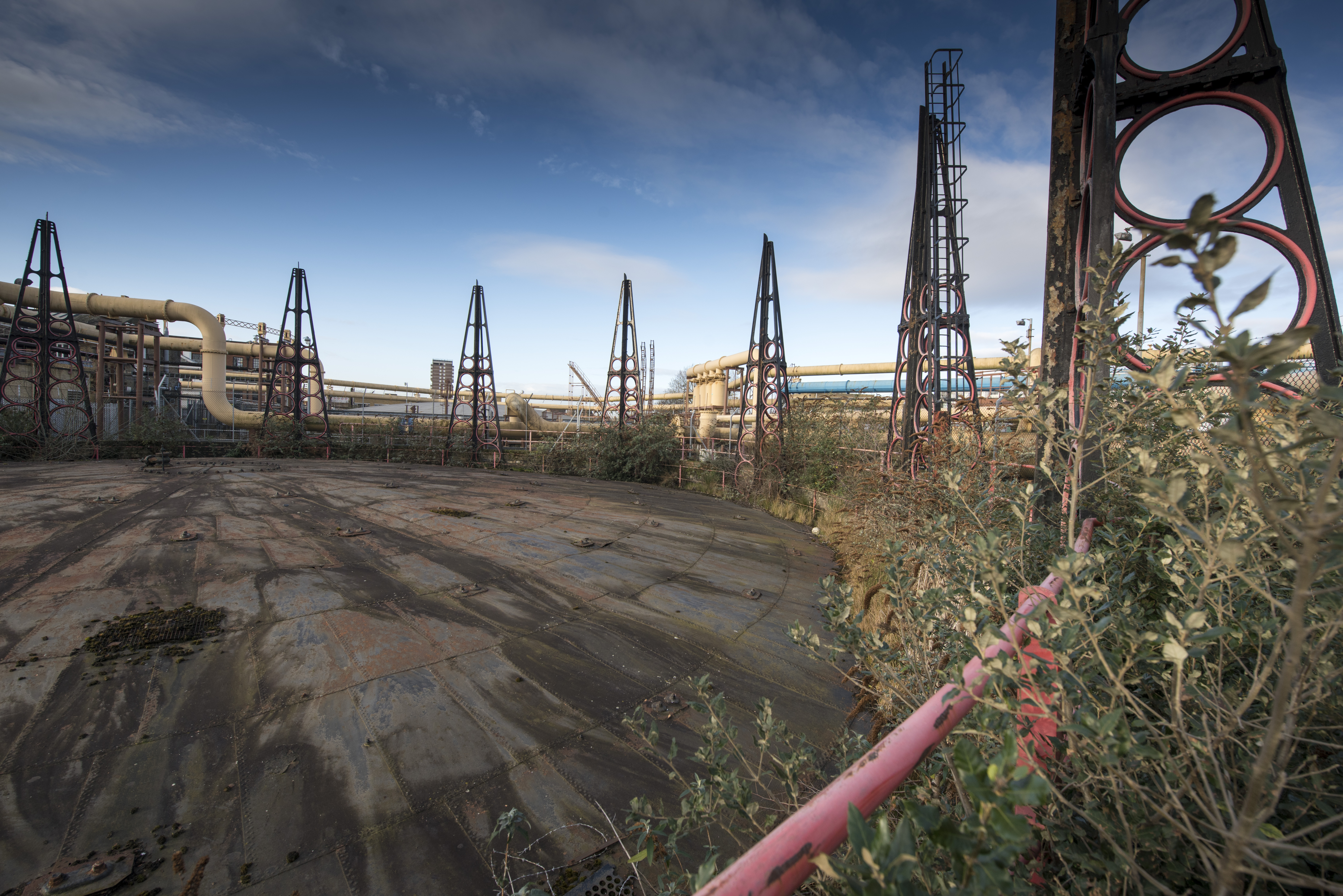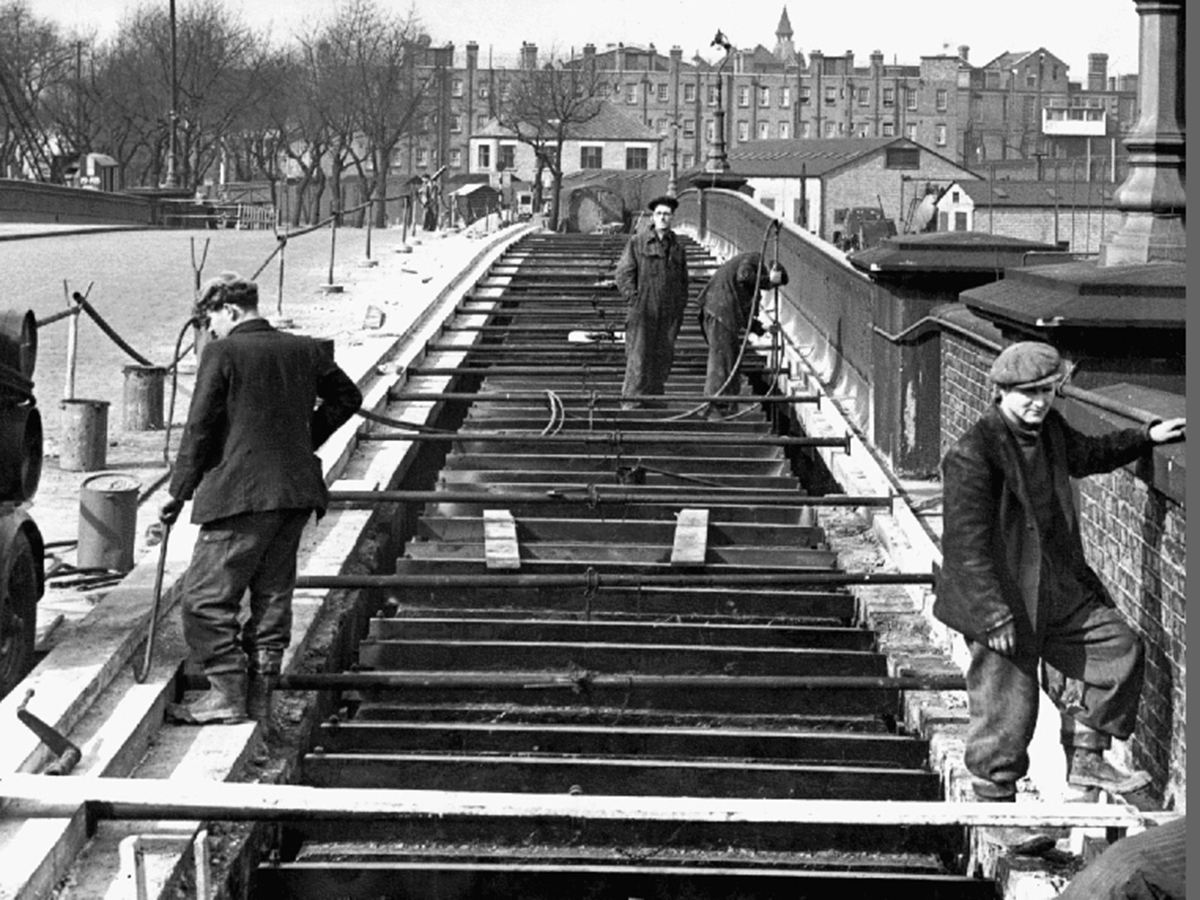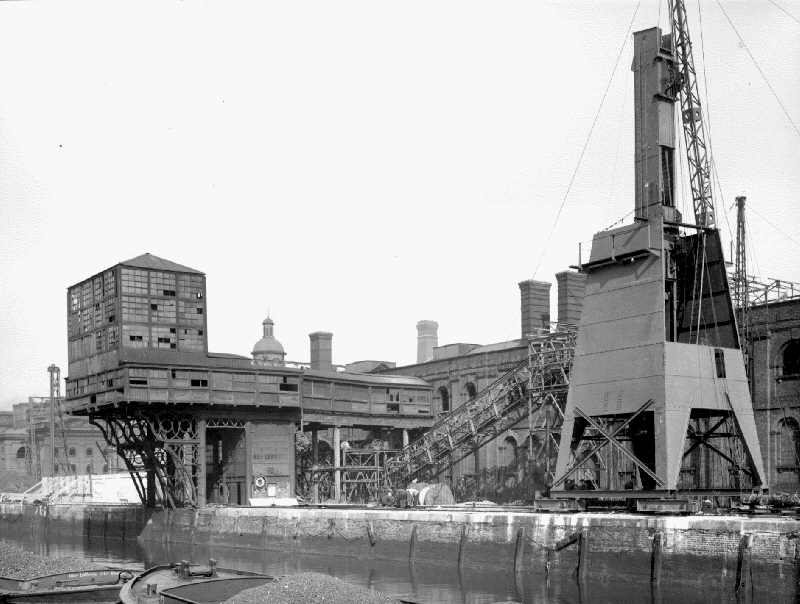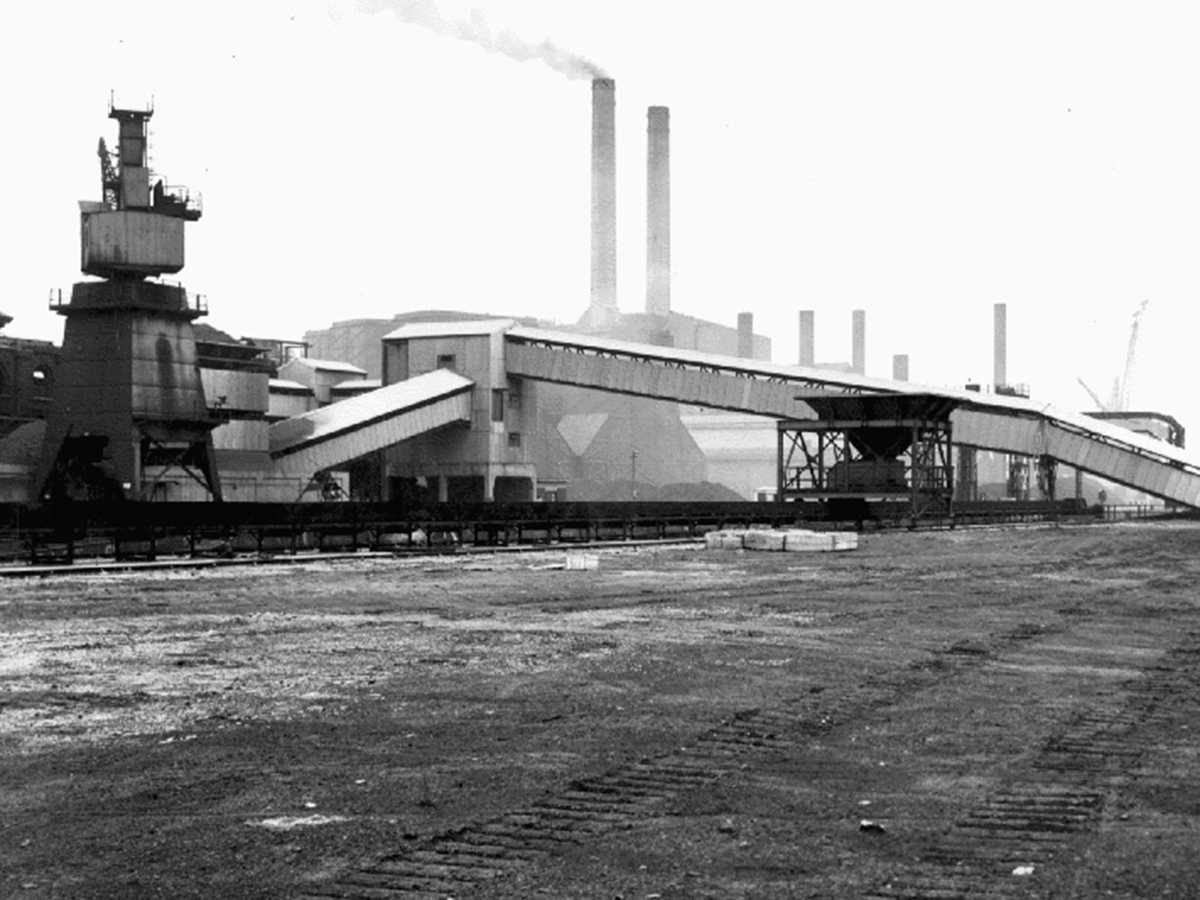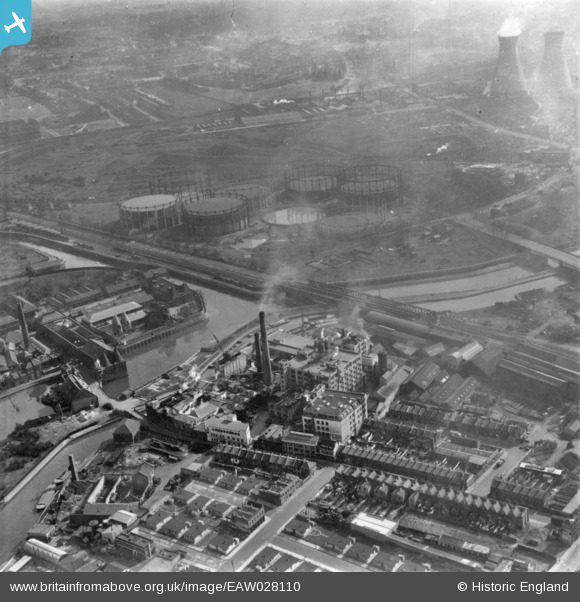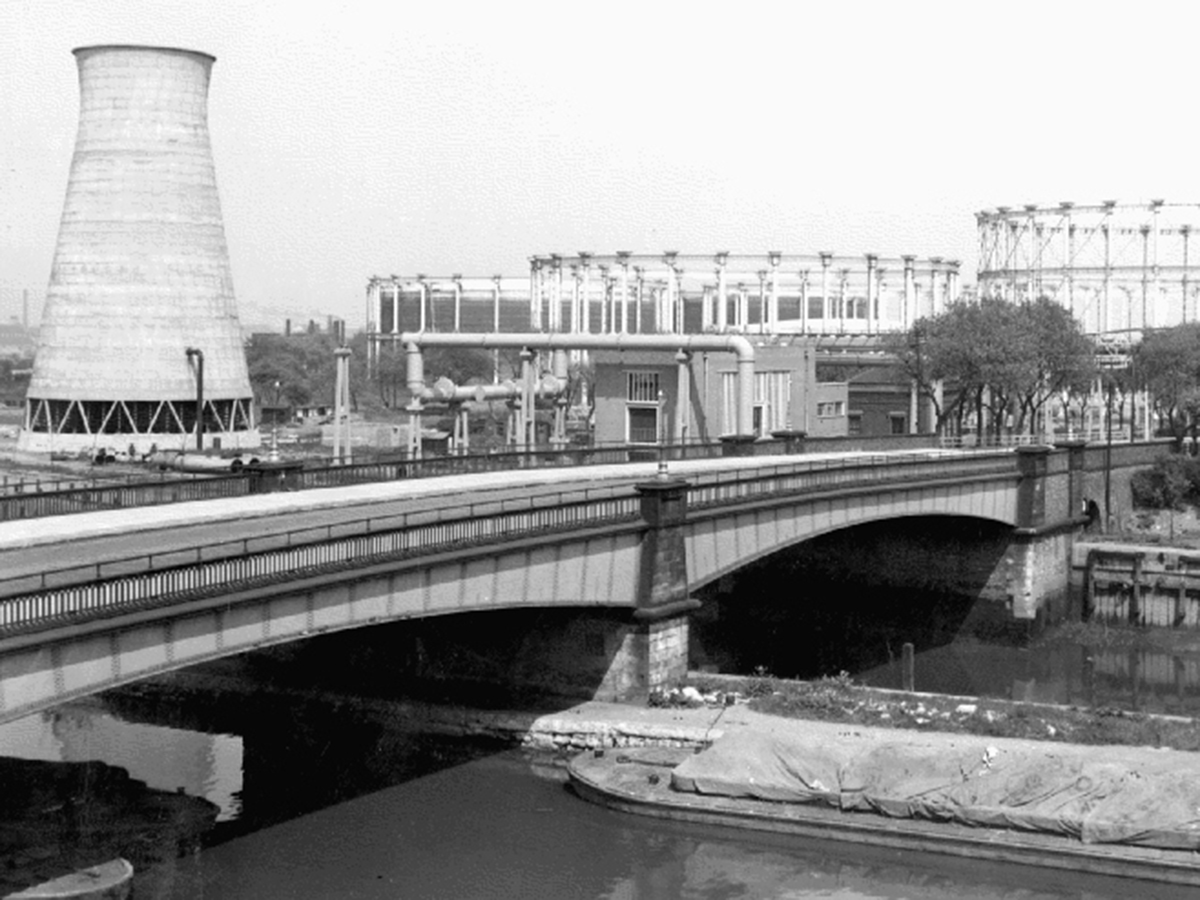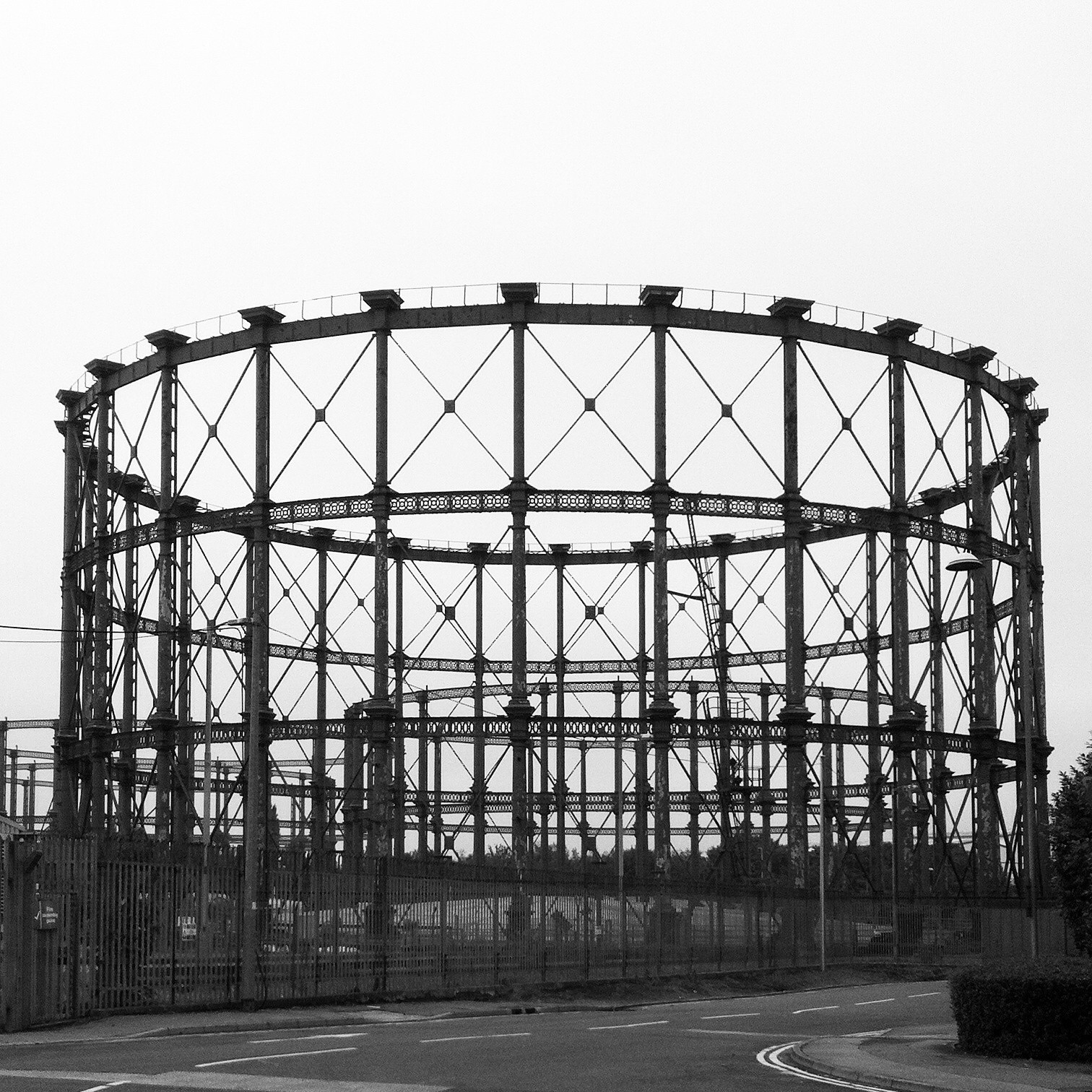HISTORY
The gasholders fit within a wider industrial context of the River Lea. The Lea and its low lying marshland has hosted industrial works for centuries, with its course being much altered to allow for such activity.
Bromley-by-Bow Gasworks was established by the Imperial Gas Light & Coke Company in 1870 for the production and storage of gas.
In the 1960s, activity on the site decreased when North Sea gas was piped into the UK, providing a cheaper and cleaner alternative to the manufacture of coal gas. This is a story that is very common to the gas industry, as the large works were slowly brought to a close.
The Pressure Reduction Station in the south western corner is the only part of the site currently used for the supply of natural gas to homes and businesses in the area. Its role is to manage the transition of the gas from the high pressure required to supply it over long distances to the lower pressure needed for domestic appliances for cooking and heating.
Apart from the Pressure Reduction Station, the site is now redundant, which provides the opportunity for its redevelopment and to be opened up to allow public access.

